Carl Platou: Innovative Hospital Administrator
The post-war migration of families to the suburbs prompted businesses and other necessary entities to follow. Schools, libraries and shopping malls began to appear in what had previously been rural fields. Health care wasn't far behind. Carl Platou, the innovative administrator for Fairview Hospital in the post-war years, saw sense in creating a hospital holding company, and building state of the art hospitals in the suburbs financed through the parent company. When land in Edina near the newly completed Southdale shopping center became available, Mr. Platou saw an opportunity for bringing quality health care to the suburbs. He recounted the story of Fairview Hospitals in a 2007 interview with James E. Fogerty.
Audio
Transcript
JF: Tell us what happened at Fairview. Here you are, at the second smallest hospital in the Twin Cities. What was the financial status?
CP: (chuckles) Fairview’s net worth at the time was $1,800,000.00. There was one physician by the name of Dr. John Loe. He was an orthopedic surgeon, an excellent man. He came to me one day and said, "Carl, I’m leaving practice. I’m going to do nothing but scoliosis." I said, "What’s that?" "It is curvature of the spine." And so I said, "What can we do to help?" He said, "I need space." I replied that we had some space.
He started a scoliosis clinic which became internationally recognized because of the skill and leadership of John. People would come from all over the world. So Fairview began to just expand in scoliosis, and then rehabilitation, and then orthopedics, and then we got into psychiatry. No other community hospital had psychiatry within its four walls. Psychiatric patients were all out in the countryside somewhere. We brought in a group of psychiatrists and started that. Then we started extended care, and all of a sudden we went from about a hundred and forty beds in four years to five hundred and forty-five.
JF: And how was this financed?
CP: The most important thing we did is we got some board members who were powerful figures. Curt Carlson. I remember seeing Curt, who then was starting his businesses. He was a whirlwind, a powerful fellow. I asked him to come on our board. ...One after another we built a powerful group of board members, and we NEVER asked for funds. Never.
I had a dear friend who came on the board to join me in administration. His name was Bob Larson. ...He was the cause of our having financial skill. ...He did new things. He created something called zero bond financing, and he just was innovative.
Donald Grangard, the chairman of First Bank System...came on the board after he and I talked about the concept of the multi-unit hospital system; the concept of a hospital holding company. It had never been done before. Anywhere. We were probably the first. If not the first, we were the first multi-unit system in the United States.
JF: When did that idea come to you? How long after you'd arrived at Fairview in 1952?
What really happened was that after the war the demographics of the nation changed. Two things changed, in particular. One, there was free education for all GIs. The GI Bill was a seminal act of Congress. Probably the most significant act of Congress in many, many years. The second was home mortgages for GIs. So young men were getting educated and they were starting families, and places called Richfield, Bloomington, and Edina all began to mushroom. It was because of the wisdom of Congress that all that happened. That came the question of how do you bring education into those communities? How do you bring libraries in? And great medical care. ...So the expansion began in demographics.
One day I got a hold of an article on the Bank Holding Act of 1898. Congress passed a bill that said a bank in Valley City and a bank in Jamestown and bank of Mankato, or whatever, can interlock with an overall board, maintain their individual boards and their management, but have financing through the totality. They could pledge the assets of all.
...So I was reading that, and it dawned on me that we could keep a local board, a local management, and do the same with hospitals. We could pool the assets of two or three or four or five of us, or whatever number, and have an overall board elected by those operating boards. The individual boards could deal with the different economic issues in the different communities. You put them all together and then you have the strength of the totality.
I was having dinner one night with a gentleman at a party by the name of Robert Crabb. I said, what do you do? He said, "I'm president of Dayton Properties." I said, "I see you have a piece out there at Southdale - a medical zone." He said, "Absolutely." I said, "I'm from Fairview Hospital." He said, "Where’s that?" I said, "It’s next to St. Mary's, and we have an idea. Were going to create a hospital holding company. We're going to build a new hospital in the suburbs. We will not have a fund drive."
He asked me how we could build a new hospital without a fund drive. He said, "How can you do that?" I told him that we would pledge the assets of the holding company. He said that he had never heard of anything like that. I said, "Well, we're doing an article now for Harvard Business Review." I gave him a draft.
When we met a few days later he said, "You know, this really has merit. We've invited Northwestern Hospital to come out to Southdale, and they turned us down. We invited Abbott to come out. They turned us down – even though Donald Dayton was the chairman of the Abbott board." Mr. Donald was the senior partner. He said, "I think what we should do is to have dinner some night with your board chairman" - who was a fellow by the name of Carl Granrud. He was a wonderful, wonderful man - "and include Bruce Dayton," who was number two at the Dayton Corporation.
So the four of us met on November 10, 1957. ...Mr. Dayton said, "Well, this really seems to make sense. We have fifteen acres at Southdale for a medical zone." Carl said, "That's right. We'd appreciate you giving that to us." I thought, "Oh!" Mr. Dayton said "Well, I don't think we can afford to give it to you, but we'd like to work with you....Why don't we ask Mr. Platou and Mr. Crabb to get together?" So Bob and I met the next day and spent a day and a half putting down the basic principles. We had another meeting, and that was at the end of November. We sat down, and Mr. Dayton said, "Well, Mr. Granrud, do you endorse what Mr. Platou has recommended?" And he said, "I certainly do." And he said that he was for it and Mr. Crabb was. So he reached over and he said, "Carl, the fifteen acres is yours."
That was it. That made us. And of course it set up a pattern for other hospitals throughout the nation to do the same.

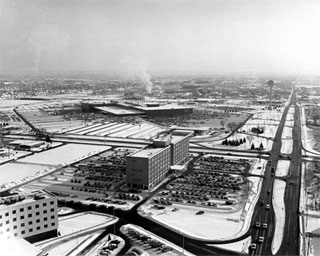
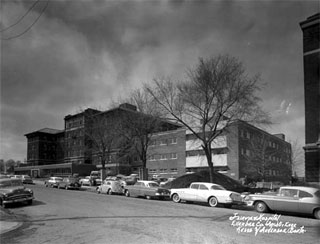
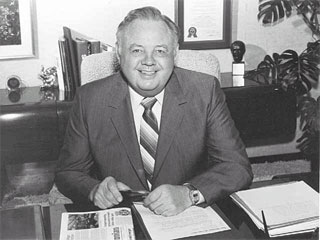
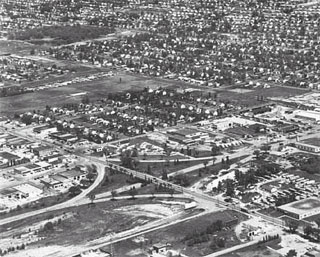
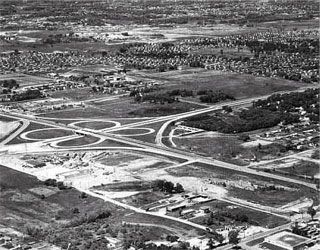

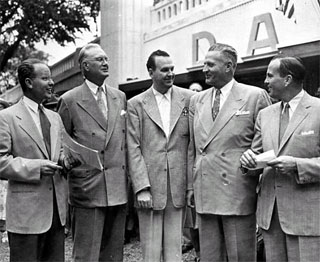
Source
Platou, Carl; James E. Fogerty, Interviewer, Minnesota Historical Society: Minnesota's Greatest Generation Oral History Project, 2007.


